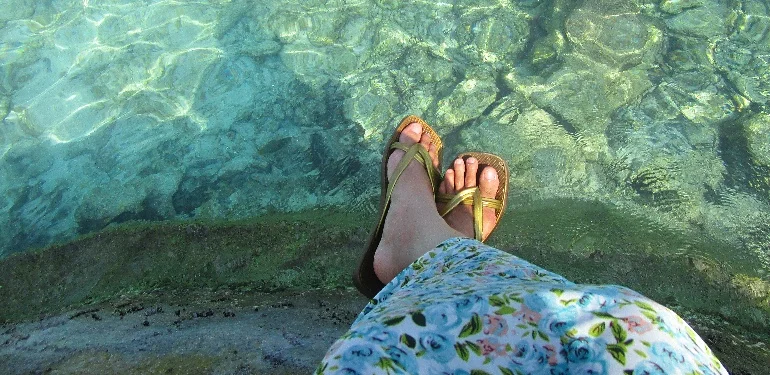
What you need to know about Anambas
Located just over 200 kilometers northeast of Singapore, the Anambas Archipelago is an Indonesian frontier territory that has seemingly eluded discovery by the world at large, let alone the tourism industry, until this day.
A somewhat mysterious land of secret Bounty islands, spectacular untouched scenery and wondrous geological structures, the Anambas islands recently however, have been finding themselves the object of desire amongst travelers keen for rare off-the-grid destinations that feature natural treasures, ultimate tranquillity and one of a kind eco-adventures.
If you're one of these travelers, if you have a zest for exploring hidden parts of the world, if you eschew carpeted hotel lobbies in favor of a unique Robinson Crusoe-type cottage experience, if you prefer to take the road less untravelled, then Anambas is the place to be. That being said, once you have decided to immerse yourself into the sensational bliss that is Anambas, there are a few things that you need to know.
First off, Anambas actually covers a total of 255 individual islands, some big some small, most uninhabited. The two main islands are Jemaja and Siantan; each has a main kampong, Letung and Tarempa, respectively, that serves as its island's de facto capital. In terms of size and population however, both Letung and Tarempa are just that, kampongs, i.e. villages. By the way, oftentimes islanders will say Letung when they mean Jemaja and Tarempa when they mean Siantan.
Although the cost of living in Anambas is considered very low for most visitors from the West, in reality, basic commodities, food, drink, transport, etc, tend to be a little more pricey than on the Indonesian mainland. The reason for this is that most essential supplies, including the fuel used to run vehicles, generators and boats, need to be shipped in by cargo vessels. Of course, even with this "premium" tagged on, Anambas is still very cheap. Nevertheless it's good to note that if you like to go island-hopping, snorkeling, turtle-watching etc, then boat travel could well be one of your main expenses.
Speaking of snorkeling, when snorkeling or scubadiving at or around one of Anambas' countless coral gardens, please avoid knocking into or touching the coral, as this may damage the coral polyps, resulting in a greater susceptibility to sea-borne pathogens and, ultimately, bleaching.
The main season to visit Anambas is April to November. The weather and the sea will be mostly calm during these months, with perhaps a short shower every few days. The remaining months, December to February, are considered monsoon season, characterized by an unstable atmosphere, rain and blustery winds. Ferry and flight are subject to delays and cancellations during the monsoon.
If you're into kayaking, SUP, windsurfing, kiteboarding or angling, then there aren't a lot of places that beat Anambas for its countless picturesque locations and abundance of fish. Of course you'll need to know where to go, so getting a good guide is recommended.
Anambas isn't paradise for visitors only. Several turtle species have made Anambas their home. In fact, several nature surveys have determined that a number of Anambas islands have some of the highest numbers of turtle nesting sites in the region. If you'd like to witness turtles nesting, please don't get too close and don't use bright lights if and when a turtle comes ashore to lay its eggs.
As hard as it is to believe and Anambas' 255 islands notwithstanding, most of this far-flung archipelago is still waiting to be charted. Even Google Maps draws blanks for the majority of the islands. In light of this, and since you're likely to come across plenty of mediagenic vistas, as well as flora and fauna, I recommend you bring your camera, as well as plenty of spare batteries and memory cards. Last thing you want when you're surrounded by a pod of playful dolphins is to run out of batteries or memory cards.
As noted before, Anambas is a remote and isolated territory that is only now becoming a little more accessible to the rest of the world. Making allowances for the islands' long history as an outpost archipelago is recommended, particularly when it comes to infrastructure, logistics and general pace of life. For best results, in Anambas it's good to not be in a hurry :)
Enquiry
Have an enquiry about Anambas? Send it here...
